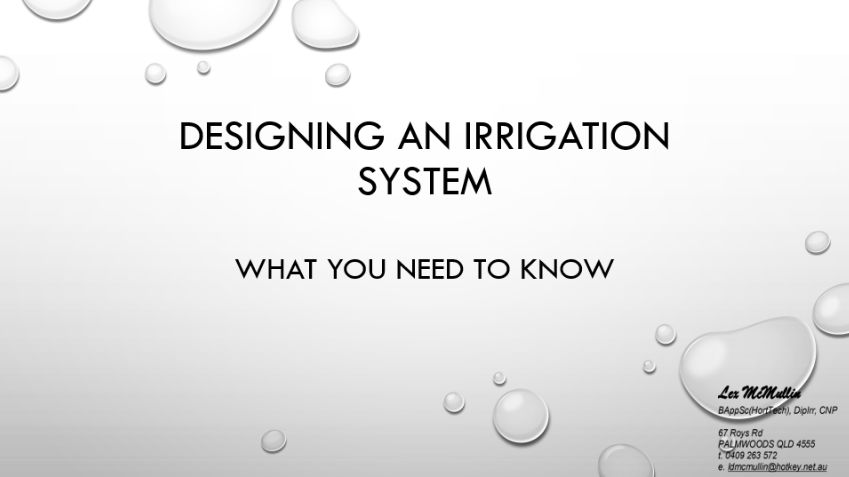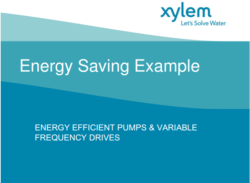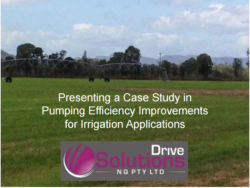With Irrigation making up a large proportion of on-farm energy for many sectors, there are often significant opportunities to save energy with improved irrigation systems.
Moving water around is energy-intensive so by saving water, farmers can also save energy. Many agricultural sectors have worked over recent years on Rural Water Use Efficiency Projects.
The Energy Savers Programs have audited a number of irrigation systems and identified a number of energy efficiency savings. See the Irrigation Case Studies HERE.
The Aginnovators website describes the 3 key aspects to an efficient irrigation system as:
- Needs analysis, design and planning to balance water and energy efficiency objectives to deliver the right amount of water at the right time.
- Optomising equipment, so that the system delivers the best result for the energy inputs.
- Energy source – using the most cost effective and efficient energy source.
PRESENTATIONS/RESOURCES
 Lex McMullin gave detailed advice on designing an irrigation system including to “Start from the End” noting that:
Lex McMullin gave detailed advice on designing an irrigation system including to “Start from the End” noting that:
- 5% of the lifetime cost of a pump is the purchase price, and 85% is the energy cost!
- Increasing poly pipe diameter from 32mm to 50mm (over 200m at 2l/s) will cut pumping costs per ML by around 90%
Phil Szabo avised growers at a Cotton Irrigation Efficiency Field day about the outcomes of energy audits in diesel and electric irrigation systems, including a diesel flood irrigation case study resulting in 28% energy savings. Phil suggested a few easy wins to improve irrigation efficiency including:
- Removing trash from suction inlets to improve pump performance by up to 20%
- Reducing air entrainment from suction ends: 2% air can reduce pump performance by 20%
- Electonic diesel engines can be up to 13% more efficient than mechanical engines
- Limiting water velocities to 2 metres per second.
IRRIGATORS FIELD DAY IN CECIL PLAINS PRESENTATION
 Pat Daley advised growers about Powering irrigation with Solar PV, including understanding irrigation system design and managed system capacity to get the most out of your solar PV.
Pat Daley advised growers about Powering irrigation with Solar PV, including understanding irrigation system design and managed system capacity to get the most out of your solar PV.
See the presentation from the September 2016 Irrigators Field Day in Cecil Plains.
NSW FARMERS GUIDES ON SOLAR POWERED PUMPING:
- Irrigation Solutions
- Stock and Domestic Solutions
- Solar Powered Pumping in Agriculture: A guide to System Selection and Design
 Grundfos presentation from the QFF and Ergon Energy Savers 2015 Roadshow with an introduction to the Grundfos free Energy Check and two sugar cane case studies:
Grundfos presentation from the QFF and Ergon Energy Savers 2015 Roadshow with an introduction to the Grundfos free Energy Check and two sugar cane case studies:
- replacing an end suction pump on a travelling irrigator, with a payback period of 3.7 years; and
- replacing a pump on a centre pivot, with a payback period of 0.19 years.
See a Xyl em Pumps worked example from the QFF and Ergon Energy Savers 2015 Roadshow showing the potential energy savings in upgrading a pump and motor to a high-efficiency model, and then further savings by adding a Variable Speed Drive (VSD) to pump the same amount of water over a longer period.
em Pumps worked example from the QFF and Ergon Energy Savers 2015 Roadshow showing the potential energy savings in upgrading a pump and motor to a high-efficiency model, and then further savings by adding a Variable Speed Drive (VSD) to pump the same amount of water over a longer period.
–
North Queensland Drive Solutions showed the QFF and Ergon Energy Savers 2015 Roadshow how variable speed drives work to improve the efficiency of irrigation pumps. The information was illustrated with two case studies about adding Variable Speed Drives to two pumps:
- a 45kW pump with numerous duties and a discharge valve targeting 45psi running 850 hours per year, getting a payback of 4 years; and
- a 90kW moveable pump with a discharge valve targeting 170psi running 985 hours per year, getting a payback of 3 years.

